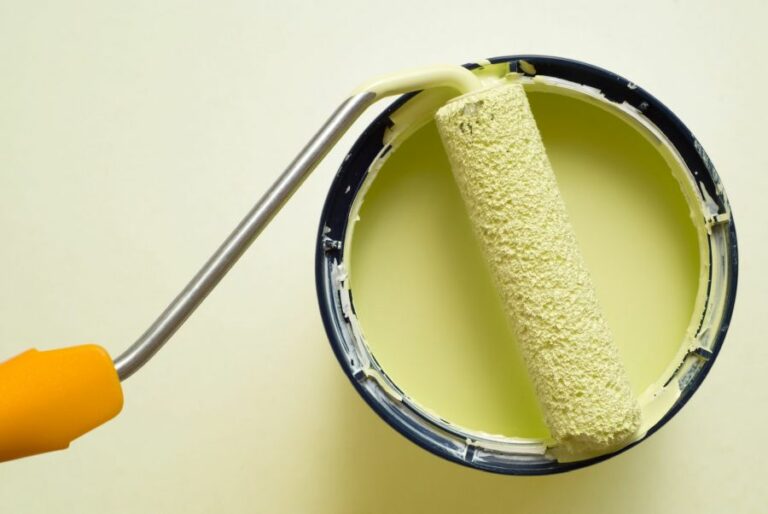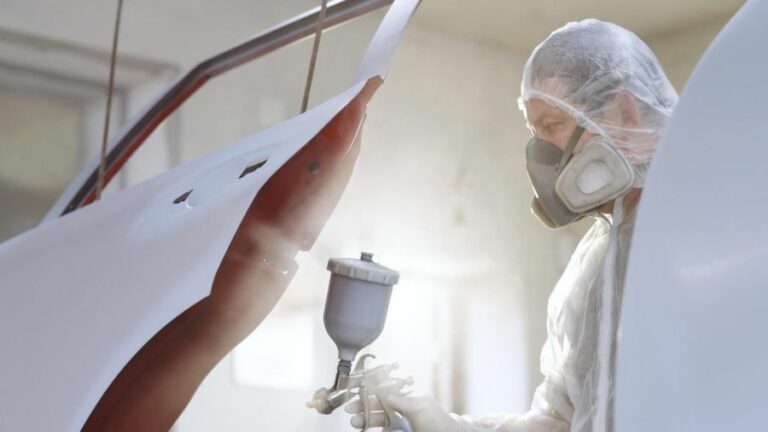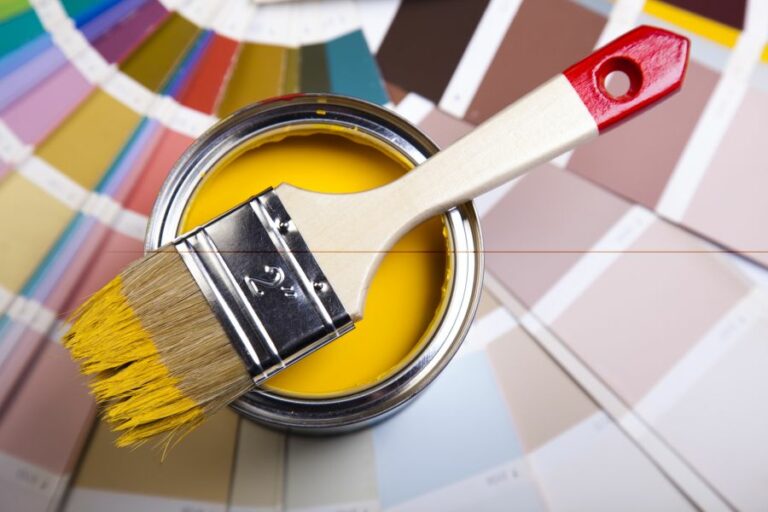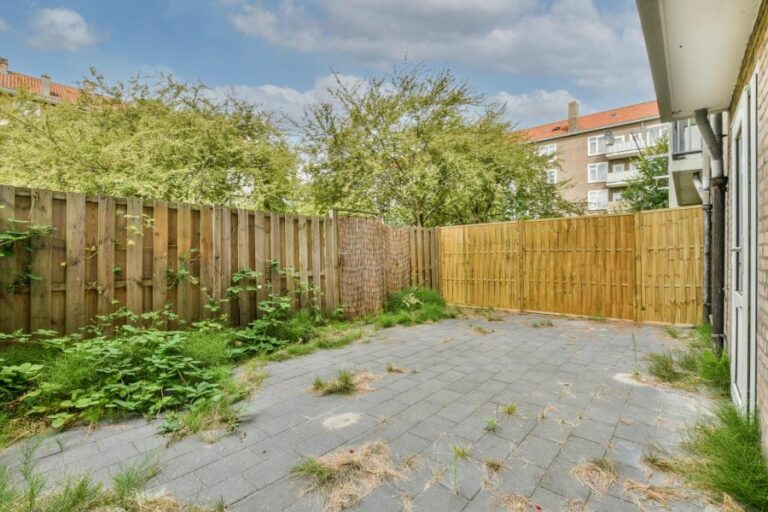The Ultimate Guide to Choosing the Best Outdoor Wood Paints
Are you tired of seeing your wooden outdoor furniture and structures lose their luster due to harsh weather conditions? Worry no more! We’ll guide you through the top-rated paints guaranteed to protect and rejuvenate your outdoor wood surfaces. Discover the perfect paint that marries durability, aesthetics, and eco-friendliness to give your backyard a lasting makeover.
Say goodbye to constant repainting and hello to stunning results that withstand the test of time. Let’s dive in and find the ideal paint to unleash your wood’s true potential outdoors!
Best paint for outdoor wood:
This comprehensive guide covers the best paint options for outdoor wooden structures, including acrylic, latex, and oil-based paints, with recommendations for top products. When choosing paint, surface preparation, climate conditions, color retention, and maintenance are factors to consider. The guide also outlines key steps to achieve a perfect finish, including surface preparation, primer application, paint application, and sealing.

Avoid paint chipping and peeling on your outdoor wood surfaces with the perfect paint! Discover the top choices, valuable techniques, and expert tips to ensure weather resistance and long-lasting colors. Elevate your outdoor space aesthetics in a few simple steps. Keep reading!
Contents
- 1 Top-Quality Paint for Exterior Wooden Surfaces
- 2 Which Kind of Paint is Most Suitable for Exterior Wood Surfaces?
- 3 What Is the Most Durable and Long-Lasting Exterior Paint?
Top-Quality Paint for Exterior Wooden Surfaces
Painting outdoor wood furniture, fences, and other structures can be an excellent way to enhance their appearance, protect them from the elements, and extend their lifespan. However, selecting the right paint for outdoor wooden structures is essential to ensure optimal performance and longevity.
We will explore the best paint options for outdoor wood, factors to consider when choosing paint, and key steps to achieve a perfect finish.
• Types of Paint for Outdoor Wood
Numerous types of paint are designed for outdoor wood, each with its unique characteristics and benefits. Here, we’ve narrowed down the top three most popular paint types you’ll encounter:
– Acrylic Paint
Acrylic paint is a versatile and durable option for outdoor wood surfaces. It’s water-based, dries relatively quickly, and cleans up easily with soap and water. Acrylic paint is also resistant to fading and yellowing, making it an excellent choice for outdoor wood exposed to harsh sunlight.
Recommended product: Behr Premium Plus Exterior Paint & Primer
– Latex Paint
Latex paint is another water-based option popular for outdoor wood surfaces. Like acrylic paint, it dries quickly, is easy to clean, and provides excellent resistance to fading and weathering. Also, latex paint is known for its flexibility, making it less prone to cracking and peeling over time than other paint types.
Recommended product: Valspar Duramax Exterior Latex Paint
– Oil-Based Paint
Oil-based paint is a durable and long-lasting option for outdoor wood surfaces. It provides excellent adhesion, resulting in a robust finish. While oil-based paint may take longer to dry and can be more challenging to clean up, it’s known for its superior resistance to chipping and peeling.
Recommended product: Rust-Oleum Protective Enamel Paint
• Factors to Consider When Choosing Paint for Outdoor Wood
When selecting the best paint for outdoor wood, it’s essential to consider the following factors:
– Surface Preparation
The condition of the wood surface plays a significant role in determining the type of paint you should choose. If the wood is rough or damaged, it may be necessary to use an oil-based paint that offers better adhesion and coverage.
However, if the wood is in good condition, a water-based paint like acrylic or latex may suffice.
– Climate Conditions
Consider the climate your outdoor wood is exposed to when selecting a paint type. For example, latex paint may perform poorly in extremely cold or humid environments due to its quick drying time.
Conversely, oil-based paint may be more suitable for harsher climates due to its enhanced durability and resistance to moisture.
– Color Retention
One of the primary reasons to paint outdoor wood is to enhance its appearance, so choosing a paint that won’t fade or discolor quickly is crucial. Acrylic and latex paints offer better color retention than oil-based paints, helping your outdoor wood maintain vibrancy longer.
– Maintenance and Durability
Consider how willing you are to maintain and repaint your outdoor wood structure. An oil-based paint may be the best option if you prioritize easy maintenance and long-lasting durability.
However, water-based paint may be suitable if you don’t mind doing touch-ups and repainting more frequently.
• Key Steps to Achieving a Perfect Finish
Lastly, we’ll go over the critical steps needed to paint outdoor wood surfaces effectively:
– Step 1: Prepare the Surface
Start by thoroughly cleaning the wooden structure and removing dirt, debris, and loose or peeling paint. Sand the surface until smooth, and patch any holes or imperfections using wood filler. After the wood filler dries, sand the patched areas until smooth and even with the rest of the surface.
– Step 2: Apply Primer
Priming is crucial for achieving a uniform and smooth finish when painting outdoor wood. Choose an exterior primer specifically designed for wood surfaces, and apply a coat using a brush or roller. Allow the primer to dry completely per the manufacturer’s instructions.
– Step 3: Apply Paint
Now it’s time to paint your outdoor wood structure. Make sure to choose the best paint for your specific situation (acrylic, latex, or oil-based), following the earlier guidelines. Apply the paint evenly and smoothly, using a brush or roller, and allow the paint to dry fully before applying additional coats if needed.
– Step 4: Seal the Surface
Once your paint has dried, protecting your freshly painted outdoor wood with a sealant is essential. Apply a clear, exterior-grade wood sealant according to the manufacturer’s instructions.
This step will ensure long-lasting protection from the elements and help prolong the life of your outdoor wood structure.
By following this comprehensive guide, you’ll be well-equipped to choose the best paint for outdoor wood and achieve a flawless finish that lasts for years. Happy painting!
Product Name | Type | Finish | Lasts For |
|---|---|---|---|
Behr Premium Plus Exterior Paint | Water-Based | Semi-Gloss | Up to 10 years |
Rust-Oleum Painter’s Touch | Oil-Based | Gloss | Up to 5-7 years |
KILZ Exterior Siding, Fence, and Barn Paint | Water-Based | Flat | Up to 15 years |
Sherwin-Williams Emerald Exterior Urethane Trim Enamel | Water-Based | Semi-Gloss | Up to 10-15 years |
Benjamin Moore Aura Exterior Paint | Water-Based | Flat, Low Lustre, Satin, Semi-Gloss | Up to 10-15 years |
Which Kind of Paint is Most Suitable for Exterior Wood Surfaces?
Exterior wood surfaces require durable paint to withstand the elements while maintaining its protective properties and visual appeal. We will explore the best type of paint for exterior wood and provide valuable tips for a successful painting project.
• Factors to Consider When Choosing Paint for Exterior Wood
Before getting into the specific paint types, various factors influence the choice of paint for exterior wood, and these aspects should be considered when selecting. The key points to keep in mind are:
- Weather resistance: Exterior wood surfaces should be painted with products that can handle constant exposure to the sun, rain, snow, and other weather conditions.
- Durability: Paint should last several years without fading, cracking, or peeling.
- Finish: Consider the desired finish and appearance, such as glossy, satin, or matte.
- Ease of application: Some paints may be more difficult to apply and maintain than others, so be sure to factor in your skill level and the time required for the project.
- Surface preparation: The condition of the wood surface can dictate the type of paint you should choose. For example, older or weathered wood may require a more durable or specialized paint.
• Why Oil-Based Paints are a Great Choice
Oil-based paints are a popular option for painting exterior wood surfaces due to their durability and weather resistance. Their ability to penetrate the wood helps create a strong bond with the surface and offers lasting protection.
– Advantages of Oil-Based Paints
- Durability: Oil-based paints provide a long-lasting, durable finish that withstands harsh weather conditions.
- Superior adhesion: Oil-based paints adhere well to wood surfaces, reducing the chance of paint chipping or peeling.
- Resistance to wear: The robust nature of oil-based paints makes them resistant to wear and tear, providing a long-lasting finish for your exterior wood surfaces.
- Versatility: Oil-based paints can be used on wood surfaces, including trim, siding, and doors.
– Disadvantages of Oil-Based Paints
- Long drying time: Oil-based paints can take an extended period, usually 24 hours or more. This can make working with these paints more challenging.
- Strong odor: Oil-based paints tend to have a strong smell, which can be unpleasant and require proper ventilation during application.
- Clean up: Cleaning brushes and other equipment after using oil-based paints can be more difficult, often requiring mineral spirits or other solvents.
- Environmental concerns: Oil-based paints contain higher levels of volatile organic compounds (VOCs) than water-based ones. VOCs can contribute to air pollution and have negative health effects, making oil-based paints a less environmentally friendly option.
• Why Water-Based Paints (Acrylic/Latex) are a Good Choice
While oil-based paints are a popular choice for exterior wood, water-based paints, such as acrylic or latex, also offer durability and weather resistance, making them a suitable alternative.
These paints have some advantages over their oil-based counterparts, which make them a top choice for many exterior wood projects.
– Advantages of Water-Based Paints
- Faster drying time: Water-based paints generally dry quicker than oil-based paints, making it easier to complete your painting project.
- Easy clean up: Cleaning brushes and equipment after using water-based paint is simple, typically only requiring water and soap.
- Lower VOC content: Water-based paints contain fewer volatile organic compounds, making them a more eco-friendly option.
- Resistance to yellowing: Some oil-based paints can turn yellow over time, whereas water-based paints maintain their original color.
– Disadvantages of Water-Based Paints
- Limited penetration: Water-based paints do not penetrate wood surfaces or oil-based paints, which could result in reduced adhesion and durability.
- Potential to swell wood: Water-based paints can cause the wood’s fibers to swell, potentially leading to a rough surface finish.
• Final Thoughts and Recommendations
In conclusion, oil- and water-based paints can be suitable for painting exterior wood, depending on your desired finish and specific requirements.
If you prioritize durability, adhesion, and resistance to wear, I recommend using oil-based paint for your exterior wood surfaces. However, consider using water-based acrylic or latex paint if you prefer a lower VOC paint with a faster drying time.
Preparation is key to a successful painting project, regardless of the type of paint you choose. Be sure to clean the wood surface thoroughly and, if necessary, sand or strip away any old paint before applying your chosen product.
These steps ensure a long-lasting and visually appealing finish for your exterior wood painting project.
Type of Paint | Pros | Cons |
|---|---|---|
Acrylic Latex | Offers a natural look by penetrating the wood and can protect against weather, moisture, and UV rays. | Requires primer on bare wood, might not bond well to previously oil-based painted surfaces. |
Oil-Based | Provides a smooth, hard finish, good adhesion to various surfaces, generally more durable. | Requires longer drying times, is harder to clean up, and may contain more volatile organic compounds (VOCs). |
Enamel | Hard, glossy finish, highly durable, resistant to moisture and mildew. | Offers a natural look by penetrating the wood, and can protect against weather, moisture, and UV rays. |
Exterior Wood Stain | May require more frequent re-application and doesn’t provide a protective barrier like paint. | Can be more expensive and can take longer to dry and cure. |
What Is the Most Durable and Long-Lasting Exterior Paint?
When renovating a home, choosing the right paint can make all the difference in terms of longevity, protection, and aesthetic appeal. We will delve into the world of exterior paints and discover which type is the longest-lasting option for your needs.
• Key Factors to Consider for Exterior Paint Longevity
Before we discuss specific paint brands and types, it is essential to understand the factors contributing to exterior paint’s overall longevity and durability.
– Quality of Ingredients
One of the most important determinants of exterior paint longevity is the quality of the ingredients used in the formulation. Higher-quality ingredients typically last longer, provide better protection against the elements, and maintain their color and appearance more effectively over time.
– Climate and Weather Conditions
The local climate and weather conditions play a significant role in the durability of exterior paint. Factors such as humidity, temperature fluctuations, and exposure to sunlight all impact the paint’s ability to withstand the elements.
Depending on your location, certain paints may perform better than others in terms of longevity.
– Surface Preparation and Application
Proper surface preparation and application can significantly affect the longevity of exterior paint. Surfaces should be clean and free of loose or peeling paint, and necessary repairs should be completed before painting.
Following the recommended application methods and the correct number of coats per paint type can vastly improve the paint’s performance and lifespan.
• Top Choices for Longest Lasting Exterior Paints
With the factors affecting paint longevity in mind, let’s now explore some of the top choices for longest-lasting exterior paints available on the market.
– Acrylic Latex Paint
Acrylic latex paint is one of the most durable and long-lasting exterior paint options. This is primarily due to its excellent adhesion properties, flexibility, and resistance to fading, cracking, and blistering.
Acrylic latex paint can also withstand temperature fluctuations and offers superior resistance to mildew and fading caused by UV exposure.
Behr Premium Plus Ultra Exterior and Sherwin-Williams Duration Exterior are top-performing acrylic latex paints. Both paints are known for their exceptional durability, coverage, and color retention.
– Water-Based 100% Acrylic
While still technically a subset of acrylic latex paint, water-based 100% acrylic paints are distinct in that they contain no added solvents and are comprised solely of acrylic polymers. These paints offer higher UV resistance and increased durability and adhesion compared to traditional acrylic latex paints.
Benjamin Moore Aura Exterior is a highly recommended 100% acrylic paint option. This paint offers outstanding fade resistance, color retention, and excellent coverage and durability.
– Elastomeric Paint
Elastomeric paint is another long-lasting option for exterior surfaces, particularly in climates with significant temperature fluctuations or high moisture levels. These paints provide a thick, flexible, waterproof membrane that helps prevent moisture penetration, cracking, and peeling caused by expansion and contraction due to temperature changes.
Valspar Duramax Elastomeric Exterior is a top choice for elastomeric paint. This paint is known for its superior water repellency, elasticity, and ability to bridge cracks in masonry and stucco surfaces.
• Additional Considerations for Paint Longevity
While selecting one of the long-lasting exterior paint options mentioned above is important, there are additional considerations to take into account that can help ensure optimal performance and longevity.
– Choose a Lighter Color
Lighter-colored paints tend to last longer than darker hues, as they are less prone to UV damage and heat absorption. Additionally, lighter paint colors are more likely to resist fading and discoloration over time.
– Invest in a High-Quality Primer
Using a high-quality primer is essential to achieving a long-lasting paint job. Primers provide a foundation for the paint to adhere to and extra protection against wear and tear.
– Regular Maintenance
Performing regular maintenance on your home’s exterior and addressing any repairs, such as replacing damaged siding, caulking gaps and seams, and properly cleaning surfaces before painting, can significantly extend the life of a paint job.
In summary, several top contenders regarding the longest-lasting exterior paint options exist. Acrylic latex paint, water-based 100% acrylic, and elastomeric paint are all excellent choices that provide exceptional durability, protection against the elements, and resistance to fading and deterioration.
Making the right paint selection, attention to surface preparation, color choice, and proper maintenance can ensure a long-lasting and visually appealing paint job for your home’s exterior.







